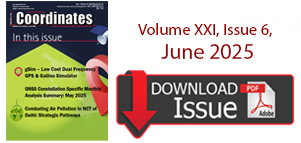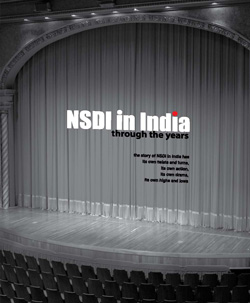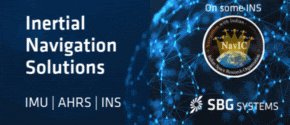Articles in the Navigation Category

The European Geostationary Navigation Overlay Service (EGNOS) is Europe’s first venture into satellite navigation, providing an augmentation signal to the Global Positioning System (GPS) Standard Positioning Service (SPS). It has been a long way for Europe, since the beginning of the EGNOS programme in the late 90’s, culminated with the declaration of availability of the three EGNOS Services:

The International Maritime Organisation (IMO) is developing e-Navigation as the future approach to marine navigation in order to enhance maritime safety. As such, the IMO state that positioning systems for e-Navigation “should be resilient …. robust, reliable and dependable. Requirements for redundancy, particularly in relation to position fixing systems should be considered”

The automation of agriculture has become a significant concern due to the benefits of increased productivity and enhanced operational safety developed in 1997 [1]. In recent years, with the on-going development of mechatronic techniques, traditional manual work has been replaced by automated tools, such as the harvester, mower, and sprayer [2]. However, more specialized farming work still requires human manipulation of farming machinery….

High-performance autonomous pedestrian dead-reckoning (PDR) systems usually include 6 degrees-offreedom (DOF) inertial measurements unit (IMU) to calculate position of the user. These systems don’t rely on GPS signals and preinstalled infrastructure such as RF beacons, Wi-Fi routers, ultrasonic transmitters etc.

A casual Internet search can uncover much concern about the abruptness – and a potential for unnecessary “dodgesjust- in-case-the-azimuth direction…” – and the safety – of the climb / dive combination. Those and other capability restrictions are traceable to limited pre- GPS technology – highly dependent on transponders.

The Satellite Navigation solution is the most preferable, effective and economic aid to various Low and Medium Grade Inertial Sensors in order to get better Navigation accuracy for medium and long duration of navigation solutions. The navigation data from INS and Sat. Receiver at different intervals is synchronized and fused together by using Kalman Filter algorithm so as to obtain precise Navigation solution as long as Sat.

Guidance and steering control systems that are now in widespread use by farmers for ploughing and cultivating the land with unprecedented accuracy, require centimetre-level position as well as attitude information accurate to a few degrees. Additionally, position and attitude update rate of no less than 10Hz is required for successful guidance in agricultural environments. Guidance and steering control systems rely particularly on heading and roll measurements to steer the tractor on parallel straight lines or curves known as plough lines.













 (5.00 out of 5)
(5.00 out of 5)